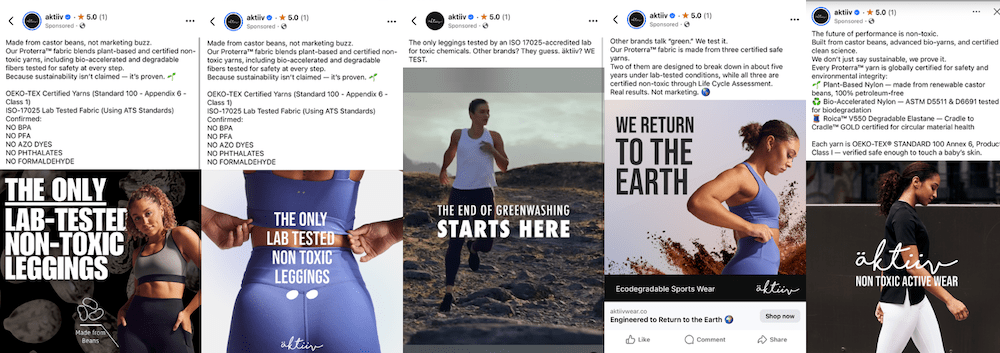The opinions expressed here by Trellis expert contributors are their own, not those of Trellis.
![]()
The post-World War II architecture of international cooperation is eroding. Multilateral institutions have weakened, nationalist sentiment is surging and superpowers are wielding markets as geopolitical weapons. The world has moved from bi/unipolar dominance to a massively splintered multipolar world. For multinational corporations, this creates a fundamental challenge: How do you execute coherent ESG and DEI strategies when the global frameworks that supported them are fragmenting?
The traditional global sustainability playbook assumed relatively stable international norms, such as aligned carbon accounting standards, converging labor protections and coordinated trade rules. That assumption no longer holds. Instead of navigating a coherent global framework, businesses face contradictory requirements across dozens of jurisdictions, diverging stakeholder expectations and the absence of clear international standards to point to as validation.
This fragmentation demands strategic adaptation. The question isn’t whether to maintain ESG and DEI commitments (the business case remains compelling), but how to execute them effectively when the connective tissue of international cooperation has frayed. What worked in a multilateral world won’t work in a fragmented one.
5 strategic shifts for a fragmented world
1. From compliance arbitrage to principled consistency
Fragmentation creates tempting opportunities: comply minimally in each jurisdiction, exploit regulatory gaps and play governments against each other. To be sure, some companies will take this approach, but this short-term opportunism is strategically foolish.
The smarter approach is principled consistency: choosing high standards and applying them globally, even where not legally required. For example, one company we worked with used Principle 10 (anti-corruption) of the United Nations Global Compact to justify why it couldn’t pay “facilitation payments” to local officials, reducing costs and risk without offending those with the power to limit market access.
2. From rule-taker to rule-shaper
Traditionally, businesses were largely rule-takers — complying with standards set by governments and multilateral bodies. While many private entities sought to influence policy, and still do, governments set the rules. However, as many governments increasingly ignore scientific and stakeholder consensus, businesses — the most trusted social actor in much of the world — are becoming de facto standard-setters.
This shift creates responsibility and opportunity. The responsibility: Recognize that your standards shape stakeholder and market expectations, whether you intend them to or not. The opportunity: Participate actively in industry-led standard-setting rather than waiting for governmental guidelines that may never come.
Strategic action means joining or forming industry consortia that maintain common standards even as governments diverge. It means investing in sector-specific standards organizations and recognizing that business has moved from the sidelines to the playing field in global governance.
3. From stakeholder management to stakeholder navigation
The multilateral era offered a simplifying assumption: Stakeholder expectations would gradually converge around international norms. European standards would influence global practice. Labor protections would harmonize upward. ESG frameworks would align.
Fragmentation destroys this assumption. Now firms face stakeholders with fundamentally contradictory expectations: investors demanding ESG commitments versus politicians attacking “woke capitalism”; European customers expecting aggressive climate action versus American jurisdictions penalizing fossil-fuel divestment; human rights advocates demanding supply-chain transparency versus governments restricting data flows.
Strategic navigation requires several capabilities:
- Understand stakeholder expectations geographically and ideologically: “Investors” aren’t a monolithic category — different groups have divergent ESG priorities that may be irreconcilable. Practice principled consistency.
- Communicate the business case relentlessly: In a politicized environment, framing ESG initiatives as business imperatives rather than social commitments provides insulation from ideological attacks. Lead with the advantages for talent acquisition, risk management, operational efficiency and market access.
- Make strategic choices about which battles to fight: Not every stakeholder expectation can or should be met. Saying no remains one of the most difficult things to do in the ESG space, as it often means saying no to an issue or activity that’s important. Open and honest conversation about decision-making is key.
- Build coalitions of aligned stakeholders: When expectations fragment, assembling employees, investors, customers and suppliers who share priorities creates a counterweight to opposing pressures.
4. From risk mitigation to resilience building
Traditional ESG strategy treated geopolitical fragmentation as a risk to be mitigated — something temporary that would eventually resolve. This was always optimistic. Now it’s strategic malpractice.
Fragmentation isn’t a temporary disruption to be weathered. It’s the operating environment for the foreseeable future. Strategy must shift from hoping governments restore rational policies to building resilience for operating effectively within a fragmented system. Adaptive companies will:
- Diversify supply chains to account for regulatory divergence: The chain should account for both geographic and regulatory diversification — ensuring you can serve markets with contradictory requirements without rebuilding your entire operation.
- Plan scenarios that treat fragmentation as a baseline: Most corporate scenario planning still treats multilateral cooperation as the central case with fragmentation as downside risk. Invert this. Plan for continued fragmentation with occasional coordination as an upside surprise.
- Structure your organization to enable regional adaptation within global frameworks: Fragmentation makes the “think global, act local” challenge more acute. You need global standards (for efficiency and brand consistency) and regional flexibility (for regulatory compliance and stakeholder engagement).
- Invest in knowledge infrastructure: Understanding diverging regulatory requirements, tracking contradictory stakeholder expectations and maintaining situational awareness across fragmented markets requires dedicated intelligence capabilities that many organizations lack.
5. From passive participation to active investment
Many business leaders are reluctant to accept this strategic truth: Global cooperation frameworks are public goods that businesses rely on but are currently underfunded.
Multilateral institutions, international standard-setting bodies, cross-border governance initiatives, trade frameworks — these create the predictability, stability and common language that enable global business. As governments retreat their funding and participation, these mechanisms weaken. And as they weaken, the operating environment for global business becomes more costly, complex and risky.
Strategic response requires active investment — with money, political capital and executive attention — in maintaining and rebuilding international cooperation mechanisms. The payoff isn’t immediate or easily measurable. But neither is investment in R&D, brand building or talent development. All are investments in capabilities that compound over time.
A framework for execution: Fit, commit, manage, connect
These five strategic shifts require systematic execution. IMPACT ROI’s framework, developed over a decade ago and recently updated, offers an effective approach for translating ESG strategy into operational reality.
Fit: Requires an honest assessment of where ESG initiatives align with core business strategy and competitive advantage. In a fragmented world, this becomes more complex, but the discipline remains essential: Not every company should pursue every initiative.
Commit: Embed priorities into performance management, capital allocation, risk frameworks and strategic planning. Without real commitment measured in dollars and executive action, initiatives remain peripheral — and fragmentation makes peripheral initiatives impossible to execute.
Manage: Build systems, metrics and accountability mechanisms with rigor. Fragmentation increases execution complexity, making disciplined management more important, not less.
Connect: Link internal and external stakeholders, break down silos and build partnerships. In a fragmenting world, connection becomes the countervailing force — the deliberate construction of collaboration where structural forces push toward isolation.
The organizations that adapt their ESG strategies for today’s fragmented reality will thrive. Those that cling to strategies designed for a multilateral world will find themselves increasingly unable to compete.
The post Rethinking corporate citizenship in 2026 as globalization wanes appeared first on Trellis.



